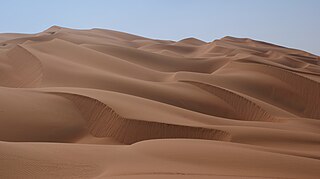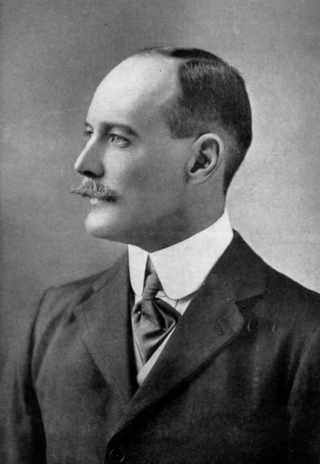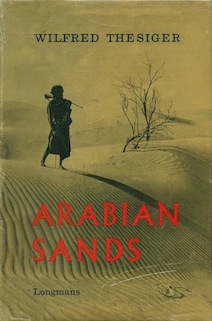Related Research Articles

The Northwest Passage (NWP) is the sea lane between the Atlantic and Pacific oceans through the Arctic Ocean, along the northern coast of North America via waterways through the Arctic Archipelago of Canada. The eastern route along the Arctic coasts of Norway and Siberia is accordingly called the Northeast Passage (NEP). The various islands of the archipelago are separated from one another and from Mainland Canada by a series of Arctic waterways collectively known as the Northwest Passages, Northwestern Passages or the Canadian Internal Waters.

Johann LudwigBurckhardt was a Swiss traveller, geographer and Orientalist. Burckhardt assumed the alias Sheikh Ibrahim Ibn Abdallah during his travels in Arabia. He wrote his letters in French and signed Louis. He is best known for rediscovering two of the world's most famous examples of rock-cut architecture – the ruins of the ancient Nabataean city of Petra in Jordan and the temples of Abu Simbel in Egypt.

The Rub' al Khali, the 'Empty Quarter', is the sand desert (erg) encompassing most of the southern third of the Arabian Peninsula. The desert covers some 650,000 km2 (250,000 sq mi) including parts of Saudi Arabia, Oman, the United Arab Emirates, and Yemen. It is part of the larger Arabian Desert.

Sir Wilfred Patrick Thesiger, also known as Mubarak bin Landan was a British military officer, explorer, and writer. Thesiger's travel books include Arabian Sands (1959), on his foot and camel crossing of the Empty Quarter of the Arabian Peninsula, and The Marsh Arabs (1964), on his time living with the Marsh Arabs of Iraq.

Faddey Faddeyevich Bellingshausen or Fabian Gottlieb Benjamin von Bellingshausen was a Russian cartographer, explorer, and naval officer of Baltic German descent, who attained the rank of admiral. He participated in the first Russian circumnavigation of the globe, and subsequently became a leader of another circumnavigation expedition that discovered the continent of Antarctica. Like Otto von Kotzebue and Adam Johann von Krusenstern, Bellingshausen belonged to the cohort of prominent Baltic German navigators who helped Russia launch its naval expeditions.

The Age of Discovery, also known as the Age of Exploration, was part of the early modern period and largely overlapping with the Age of Sail. It was a period from approximately the late 15th century to the 17th century, during which seafarers from a number of European countries explored, colonized, and conquered regions across the globe. The Age of Discovery was a transformative period in world history when previously isolated parts of the world became connected to form the world system and laid the groundwork for globalization. The extensive overseas exploration, particularly the opening of maritime routes to the Indies and the European colonization of the Americas by the Spanish and Portuguese, later joined by the English, French and Dutch, spurred in the International global trade. The interconnected global economy of the 21st century has its origins in the expansion of trade networks during this era.

Uqair, alternatively spelled as al-'Uqair, Uqayr, and Ogair, is an ancient seaport city in the Al-Ahsa Governorate of the Eastern Province of Saudi Arabia. It is the first seaport in the Persian Gulf and has been linked by some to the ancient city of Gerrha mentioned in Greek and Roman sources. The site was also the location of the conference at which the Uqair Protocol of 1922 was issued, which helped to establish the borders of modern Saudi Arabia.
Desert exploration is the deliberate and scientific exploration of deserts, the arid regions of the earth. It is only incidentally concerned with the culture and livelihood of native desert dwellers. People have struggled to live in deserts and the surrounding semi-arid lands for millennia. Nomads have moved their flocks and herds to wherever grazing is available, and oases have provided opportunities for a more settled way of life. Many, such as the Bushmen in the Kalahari, the Aborigines in Australia and various Indigenous peoples of the Americas, were originally hunter-gatherers. Many trade routes have been forged across deserts, especially across the Sahara Desert, and traditionally were used by caravans of camels carrying salt, gold, ivory and other goods. Large numbers of slaves were also taken northwards across the Sahara. Today, some mineral extraction also takes place in deserts, and the uninterrupted sunlight gives potential for the capture of large quantities of solar energy.

This is a chronology of the early European exploration of Asia.

Captain William Henry Irvine Shakespear, CIE, was a British civil servant and explorer who mapped uncharted areas of Northern Arabia and made the first official British contact with Ibn Sa'ud, future king of Saudi Arabia. He was the military adviser to Ibn Sa'ud from 1910 to 1915, when he was shot and killed in the Battle of Jarrab by Ibn Shraim. He was buried in Kuwait.
Michael Asher is an English desert explorer, writer, historian, deep ecologist, and educator. He has been acknowledged as one of the world's leading experts on the desert and its nomadic peoples. He has travelled and lived in the Sahara and the Arabian desert, published both non-fiction and fiction works based on his explorations and encounters, and presented several documentaries based on his published works.
The exploration of North America by European sailors and geographers was an effort by major European powers to map and explore the continent with the goal of economic, religious and military expansion. The combative and rapid nature of this exploration is the result of a series of countering actions by neighboring European nations to ensure no single country had garnered enough wealth and power from the Americas to militarily tip the scales over on the European continent. It spanned the late 15th to early 17th centuries, and consisted primarily of expeditions funded by Spain, England, France, and Portugal. See also the European colonization of the Americas.
Major explorations of Earth continued after the Age of Discovery. By the early seventeenth century, vessels were sufficiently well built and their navigators competent enough to travel to virtually anywhere on the planet by sea. In the 17th century, Dutch explorers such as Willem Jansz and Abel Tasman explored the coasts of Australia. Spanish expeditions from Peru explored the South Pacific and discovered archipelagos such as Vanuatu and the Pitcairn Islands. Luis Vaez de Torres chartered the coasts of New Guinea and the Solomon Islands, and discovered the strait that bears his name. European naval exploration mapped the western and northern coasts of Australia, but the east coast had to wait for over a century. Eighteenth-century British explorer James Cook mapped much of Polynesia and traveled as far north as Alaska and as far south as the Antarctic Circle. In the later 18th century, the Pacific became a focus of renewed interest, with Spanish expeditions, followed by Northern European ones, reaching the coasts of northern British Columbia and Alaska.

James Raymond Wellsted (1805–1842) was a lieutenant in the Indian navy who travelled extensively on the Arabian Peninsula in the 1830s.

This timeline of European exploration lists major geographic discoveries and other firsts credited to or involving Europeans during the Age of Discovery and the following centuries, between the years AD 1418 and 1957.

Atlantis of the Sands refers to a legendary lost place in the southern deserts of the Arabian Peninsula, known as Ūbār/Awbār (أوبار) or Wabār/Wubār (وبار) in Arabic, thought to have been destroyed by a natural disaster or as a punishment by God.

Arabian Sands is a 1959 book by explorer and travel writer Wilfred Thesiger. The book focuses on the author's travels in the Arabian Peninsula between 1945 and 1950, and details his two crossings of the Empty Quarter undertaken between 1946 and 1948. Thesiger’s first crossing, from Mughshin in Oman to Liwa across the eastern sands, was followed by a crossing of the western sands from Manwakh in Yemen, via Laila, to Abu Dhabi.

European land exploration of Australia deals with the opening up of the interior of Australia to European settlement which occurred gradually throughout the colonial period, 1788–1900. A number of these explorers are very well known, such as Burke and Wills who are well known for their failed attempt to cross the interior of Australia, as well as Hamilton Hume and Charles Sturt.

The European exploration of Australia first began in February 1606, when Dutch navigator Willem Janszoon landed in Cape York Peninsula and on October that year when Spanish explorer Luís Vaz de Torres sailed through, and navigated, Torres Strait islands. Twenty-nine other Dutch navigators explored the western and southern coasts in the 17th century, and dubbed the continent New Holland. Most of the explorers of this period concluded that the apparent lack of water and fertile soil made the region unsuitable for colonisation.
References
- ↑ Arabia
- 1 2 "Discovers Web:P". Archived from the original on 2007-07-06. Retrieved 2007-07-07.
- ↑ "Discovers Web:D". Archived from the original on 2007-07-06. Retrieved 2007-07-07.